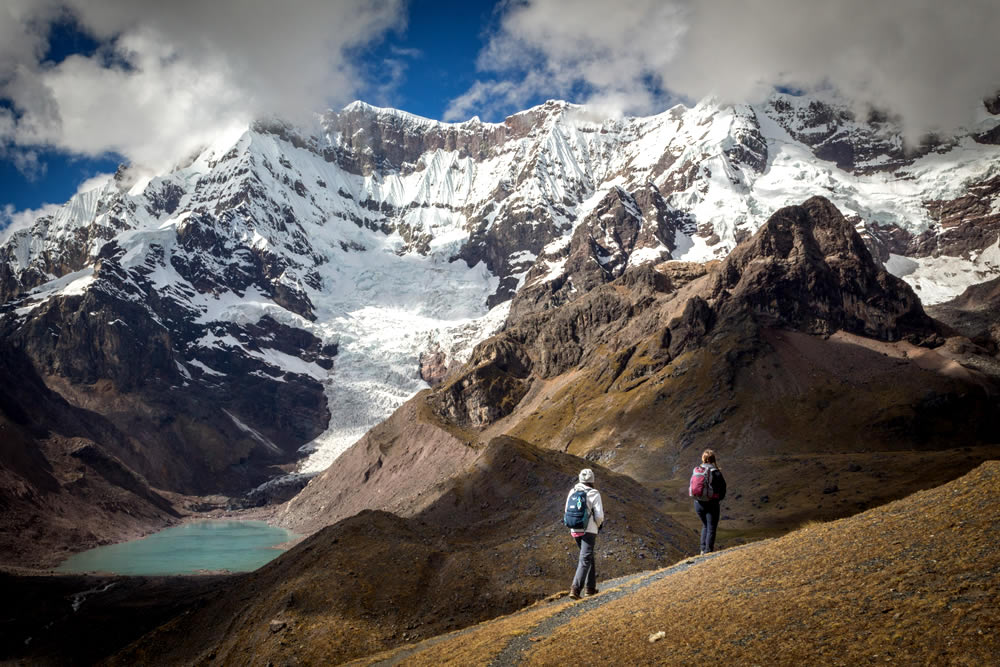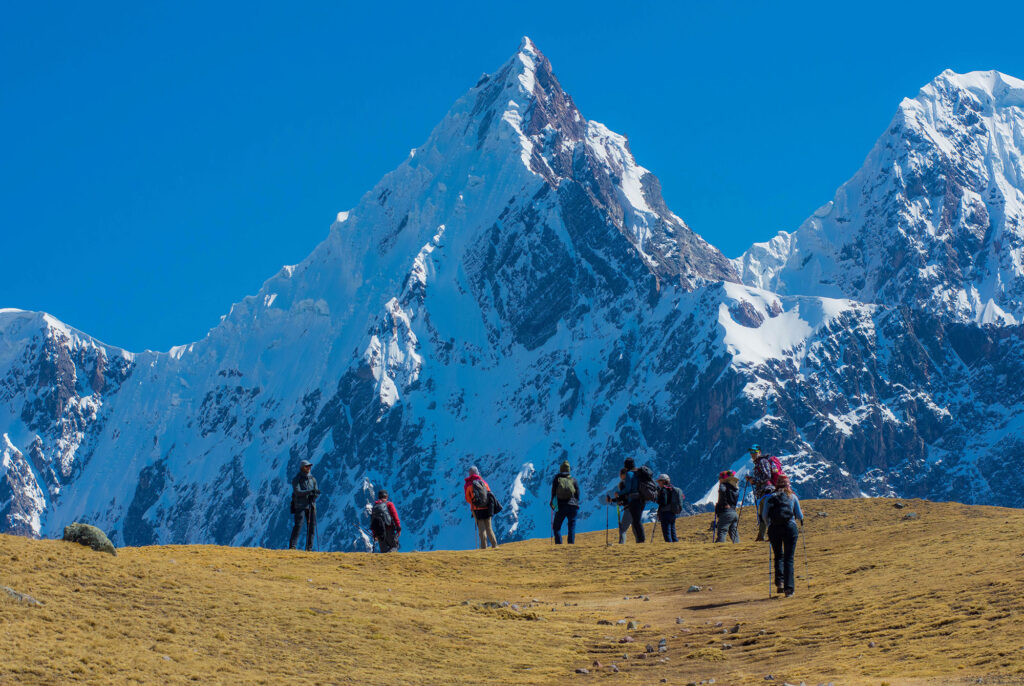The best time to visit Ausangate is during the dry season, from May to October. During these months, weather conditions are more favorable for trekking, with less rain and clear skies.

Seasons and Weather at Ausangate
Ausangate’s climate is marked by two seasons: dry and rainy. Temperatures range between 0°C and 20°C.
Rainy Season: What to Expect?
The rainy season, from November to March, brings frequent precipitation, especially in January and February. Rain can make hiking more difficult, but the landscapes are lush and vibrant.
November: Rain starts to increase, with temperatures ranging from 5°C to 18°C.
December: Rains are more consistent, so be prepared; temperatures hover around 4°C to 17°C.
January: The wettest month, with temperatures from 3°C to 16°C. Waterproof gear is essential.
February: Rainy season continues; temperatures range between 4°C and 15°C. Bring waterproof gear.
March: Rain begins to subside but still possible; temperatures vary from 5°C to 17°C.
April: Rain decreases, with temperatures between 5°C and 19°C, making exploration easier.

Dry Season: What to Expect?
The dry season, from May to October, offers sunny days and cold nights. This is the ideal time for trekking.
May: Temperatures between 2°C and 19°C; little to no rain. Ideal for worry-free hiking.
June: Sunny and cool days, with temperatures from -1°C to 18°C. Ideal for worry-free hiking.
July: The driest month; temperatures range from -2°C to 17°C. Ideal for worry-free hiking.
August: Similar to July, with temperatures from -1°C to 18°C. Ideal for worry-free hiking.
September: Temperatures begin to rise, from 0°C to 19°C. Ideal for worry-free hiking.
October: Rain starts to appear, but the weather is still mostly dry, with temperatures from 1°C to 20°C. Ideal for worry-free hiking.
What’s the Best Time of Day to Start the Ausangate Trek?
The best time to begin the Ausangate trek is early in the morning, around 6 a.m. This allows you to enjoy cooler temperatures and avoid potential afternoon rain.

Before You Go: Tips and Recommendations
- Plan your trip in advance to avoid setbacks.
- Properly acclimate in Cusco before the trek.
- Stay hydrated before and during the hike.
- Wear layered clothing to adjust to temperature changes.
- Use trekking boots.
- Bring waterproof jackets or ponchos in case of rain.
- Pack energy foods and snacks.
- Use sunscreen and sunglasses for sun protection.
- Bring a hat or cap for shade.
- Carry a basic first aid kit.
- Research the route and points of interest.
- Hire authorized guides or tours.
- Check all gear and supplies beforehand.
- Be aware of protected area regulations.
- Bring a camera to capture the scenery.
- Respect local flora and fauna.
- Know the symptoms of altitude sickness.
- Carry a power bank for electronics.
Frequently Asked Questions
Here we answer some common questions from our explorer friends.
What’s the best month to do the Ausangate Trek?
July is the best month, with the most stable and dry weather conditions.
Which month is the coldest at Ausangate?
July is generally the coldest month, with temperatures dropping to -2°C.
Does the weather affect flights to Cusco?
Yes, during the rainy season (December to March), flights may be affected by adverse weather conditions.
What to pack for the Ausangate Trek?
Bring thermal and waterproof clothing, energy food, plenty of water, sunscreen, a cap, and a basic first aid kit.
What are the best tours for the Ausangate Trek?
Organized tours often include guides, transport, and equipment. Machu Picchu Wayna offers personalized experiences with trained staff.